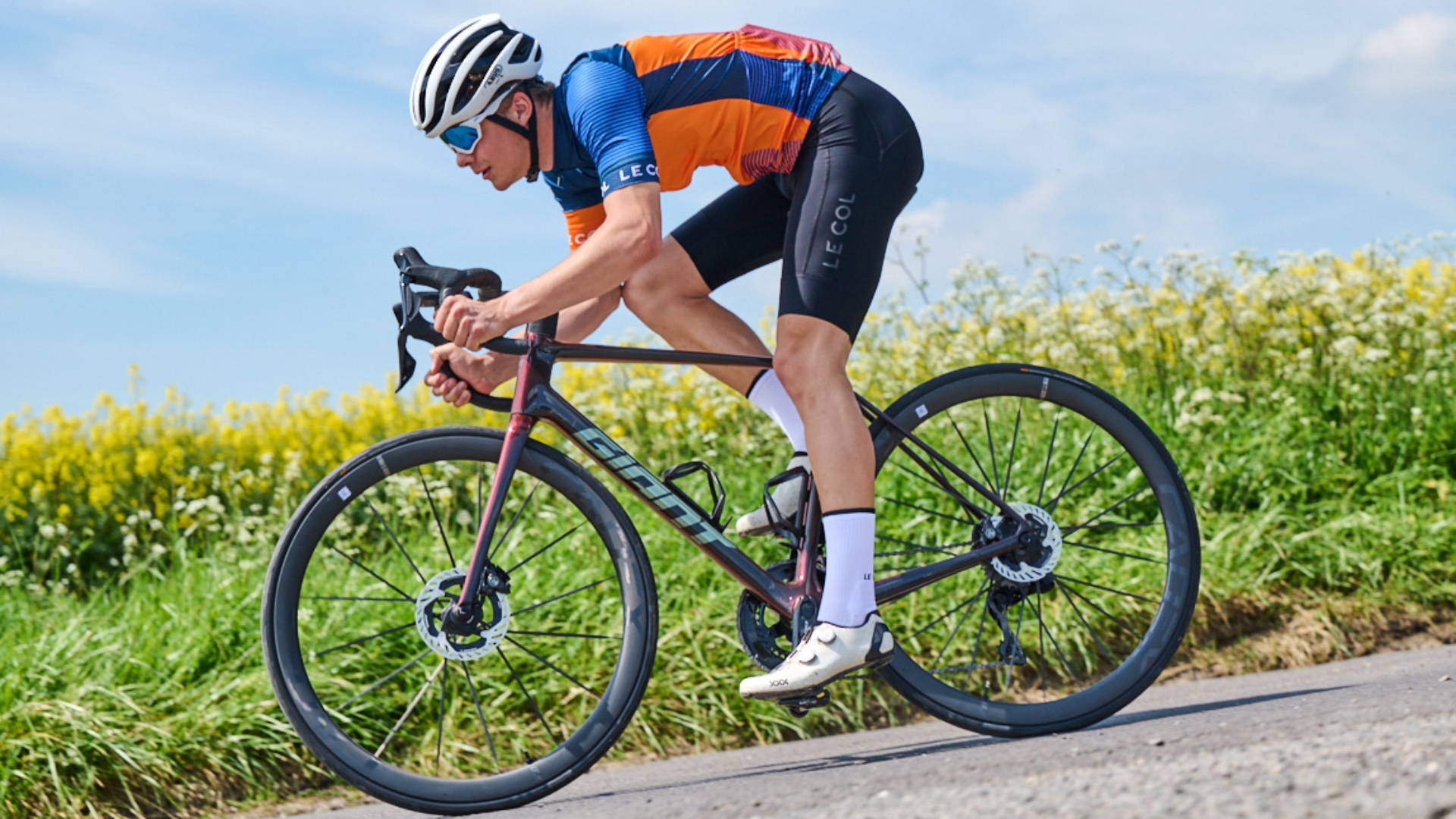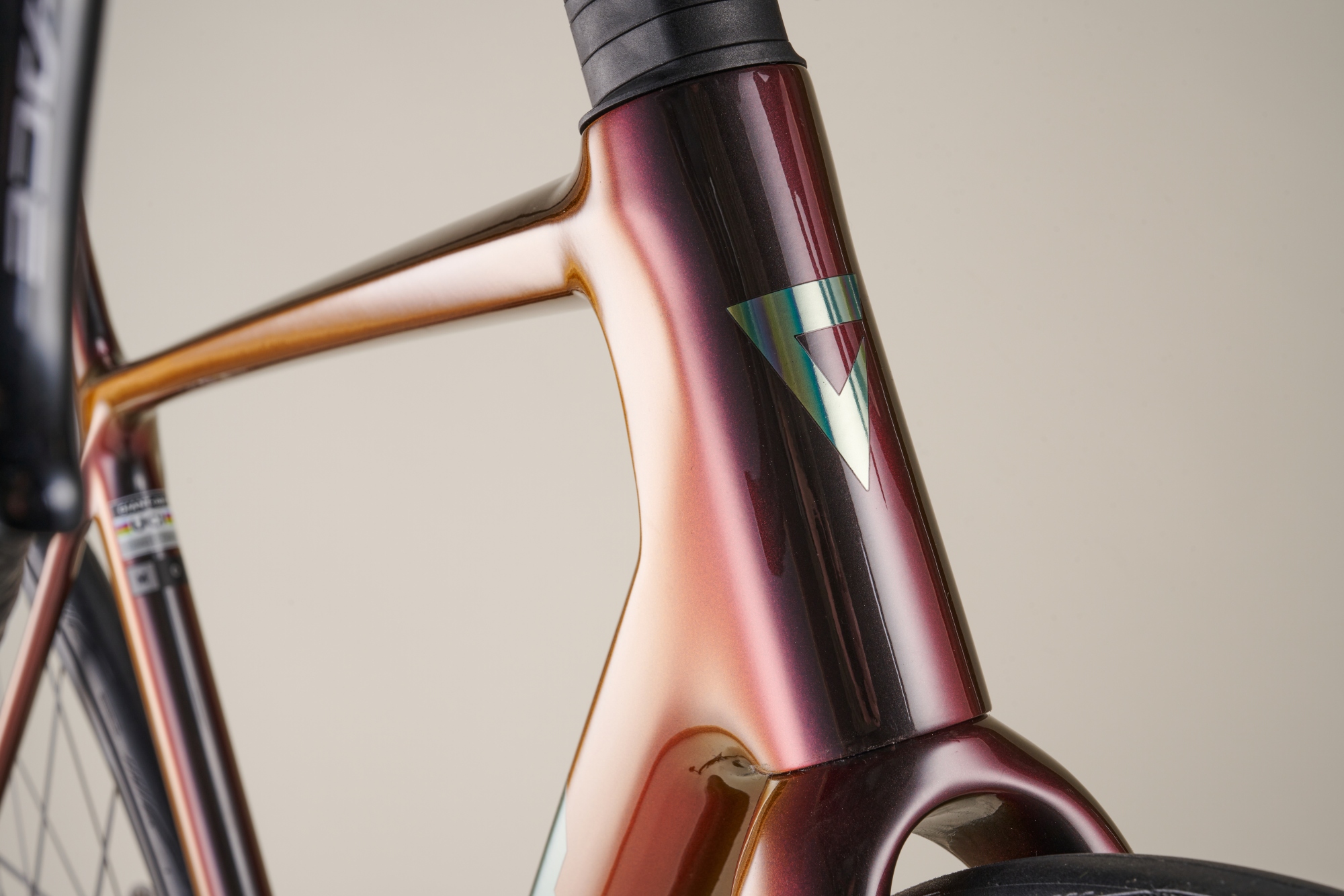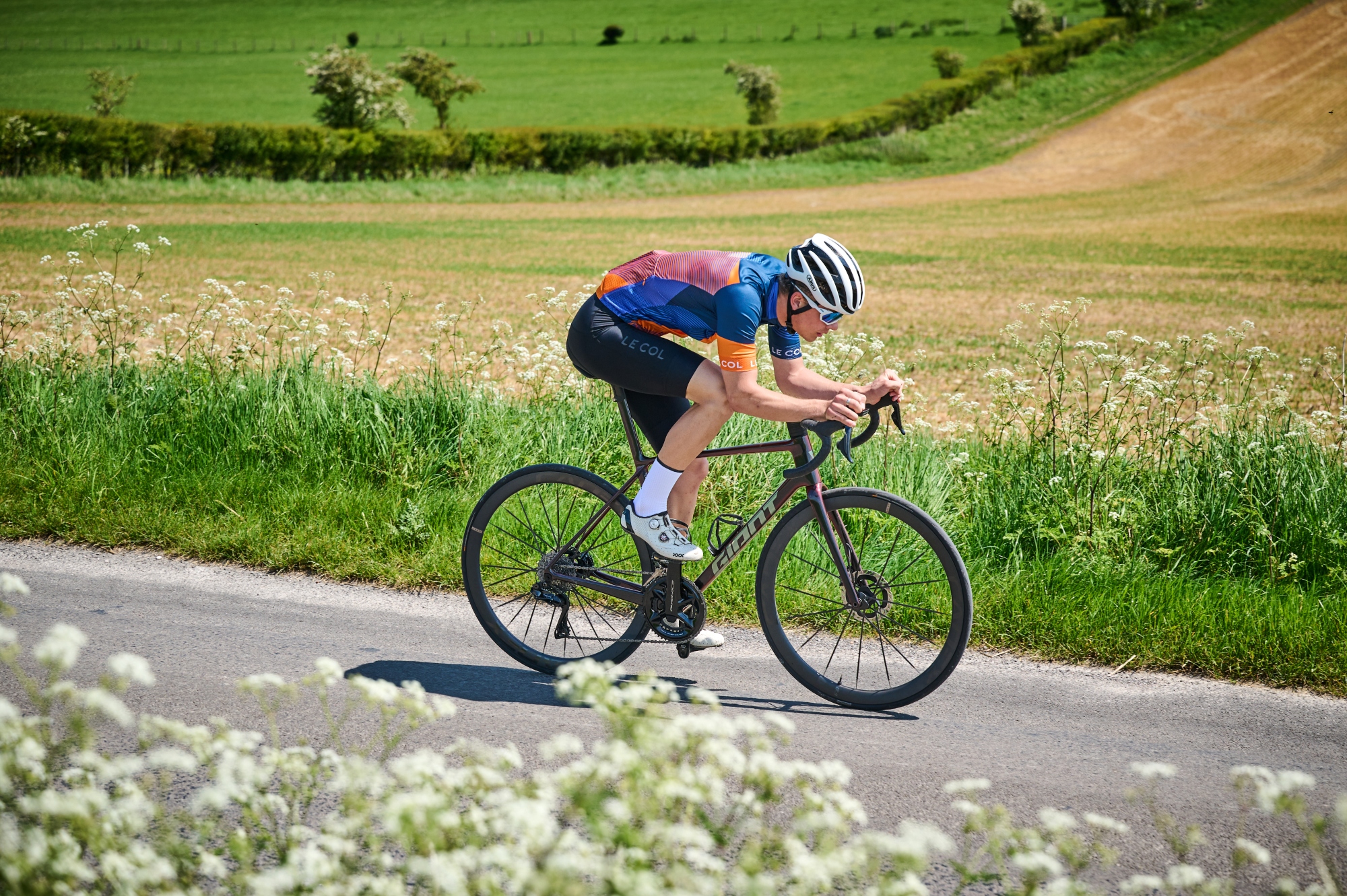
The 10th generation Giant TCR comes with a lot of performance claims in need of justification, both from the brand, and us. That’s right, just a few of weeks ago, the latest generation of the iconic racing steed stole the award for Cycling Weekly’s best climbing bike of 2024, and for good reason. Giant has brought together all of the cycling industry’s buzzwords, with aero improvements, lower weight, and increased stiffness all being present on the new race machine.
With that in mind, it’s time we dive into the details of exactly why the TCR topped our testing when the gradients got steep, so here is all you need to know about the new Giant TCR, and how it rides.
Construction
Twenty-eight years after its controversial debut with World Tour team Once, the Giant TCR has reached its 10th generation, evolving from the first bike with a sloping top tube into a sophisticated racing machine. For 2024 though, the familiar silhouette has been refined underneath the paint, boasting new manufacturing techniques and design.
The most noticeable change in the latest TCR is the full internal cable routing. A 10% lighter frameset and 5-watt aero saving leads to claims of an overall 'total system efficiency' - the bike industry’s favourite line at the moment - improvement, making the new TCR up to 12 watts faster than its predecessor.

Giant has switched from laser cutting to 'cold blade' cutting for the carbon sheets, enhancing precision and reducing deformation risk for the new TCR. This method allows for fewer carbon pieces, helping achieve a lower weight and higher stiffness. As well, Giant now constructs the front triangle from a single carbon piece using a single bladder mold, eliminating joins and further reducing weight while increasing stiffness.
The frame weighs in at 690 grams without paint, which is 75 grams lighter than the previous TCR and 155 grams lighter than the Giant Propel. While the Specialized S-Works Aethos claims a frame weight of 585 grams, comparisons are best made with fully built models, where the TCR holds its own at 6.4kg.

The TCR's aerodynamics benefit from tucked-in cables and flattened handlebar tops, contributing to a 4.19-watt improvement at 40 kph. Additionally, narrower handlebar options help reduce drag, especially with the smallest size measuring just 34cm at the hoods. Giant has opted for a two-piece setup on stock bikes too, which, though not quite as clean as an integrated setup, does make tinkering easier.
For those seeking ultimate aero efficiency, a one-piece handlebar is available, offering an extra two-watt saving. This is something I am in two minds about - a two piece cockpit is undoubtedly easier to service, and change up, but the bars on the TCR do pose as my main point of contention - more on that later.

The real gains on the new TCR, in my opinion, are made outside of the frameset alone. New Cadex Max 40 wheels fitted to our test model feature 40mm rim depth, a 22.4mm hookless internal rim width, and ultra-light carbon spokes. At 1,249 grams, these wheels strike a balance between weight and stiffness, outperforming some competitors in stiffness-to-weight ratio by 10.5%.
The ride
The result on the road then, is that this is the best Giant TCR the company has ever produced - period. The headline statistics of reduced weight and slightly increased stiffness really do translate onto the road and make for a delightful ride.
My initial ride of the Giant TCR consisted of a solid blast around a loop that I have ridden countless times and includes some steep climbing as well as higher speed flat and downhill sections that really allowed me to get a feel for the bike early on. Unsurprisingly, given the similarity of the geometry between the old and new framesets, I felt at home on the bike very quickly.

The first thing that struck me was the weight - our test bike came in at just 6.4kg for a size 54 without pedals, and as a result, it felt blisteringly responsive. The short 405mm chainstays and compact geometry allowed the bike to change direction incredibly quickly, something that always goes down well with me as someone who has a racing background.
On fast descents in Wales during my extensive testing, I felt immediately comfortable, and the bike handled descents with remarkable poise. Unsurprising too, is that the TCR’s bottom bracket is incredibly stiff, so accelerating on climbs is super fast, making the bike exciting to ride. Despite its low weight, the bike isn't sluggish on the flat. In fact, it performed admirably in faster, flatter rides - which is why this bike really stands out against competitors.
After a brief shakedown on my designated test route, it became clear that the TCR excels on steep climbs. Consequently, I spent most of my riding time in the Cotswolds, known for its challenging ascents and descents. The beautiful scenery and rolling terrain provided an excellent setting to familiarize myself with the new TCR, all while enjoying some of the finest views (and coffee) that Oxfordshire has to offer.
The bike's responsiveness and agility shone through on longer rides in my Cotswoldian playground, where I was able to push the bike on technical terrain I know best. On punchy, rolling terrain like this, the TCR really is a joy to ride. A combination of a bike that is plenty fast enough on the flat, yet excels so well when you point it up hill, creates a ride quality that constantly eggs you on to push over every rise, and tuck on every descent. The fun factor, in this relatively ‘run of the mill’ big-name bike is really there, and like I always say, if you are spending this sort of money, it needs to be!

However, no bike is perfect, and I did have one bone to pick with the TCR - the cockpit. The handlebars and stem lacked a bit of stiffness in the drops, meaning I couldn't get everything out of the bike while sprinting. No, this isn’t the bike’s primary concern, however any super bike should be capable of handling high power outputs in all scenarios. Fit the right integrated cockpit, and this might change, but out of the box, it’s not quite stiff enough for a race bike. Nonetheless, the Giant TCR remains a thrilling ride, combining the best of climbing prowess and flat-out speed.
Value
As far as price is concerned, out range topping Advanced SL 0 model will set you back a whopping £11,999 / $12,750, and so competes directly with the big names like the Tarmac SL8, and Pinarello Dogma F - so is it really better?
The Giant is certainly capable of going head to head with these race machines, no doubt about it, but where Giant really hits home is in it’s competitive midrange options. For example, the Advanced Pro 1 features a second-tier frameset, carbon wheels and 12-speed Di2 for £4,899 /$5,700, which comes in cheaper than the equivalent bikes from Specialized.
If you don’t fancy shelling out nearly twelve grand on your new race steed, Giant still provides an option using the top-level frameset from £8,799. For this rather large reduction in price, you are left with Shimano’s second tier groupset, Ultegra R8170 Di2, As well as slightly heavier Giant SLR 0 40mm wheels. For sure, these changes will add some weight to the feathery machine, but thanks to the top-level frameset, you’ll still end up with a bike that flirts with the UCI’s minimum weight limit.







